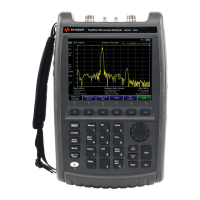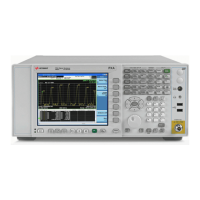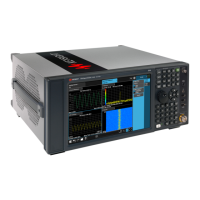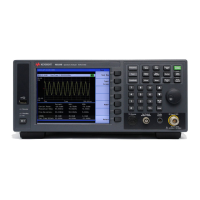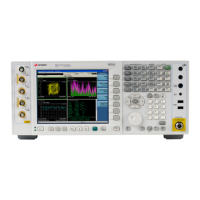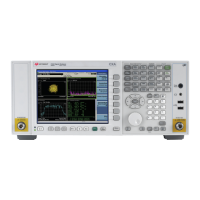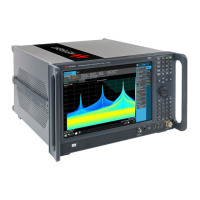4- 18 Keysight N9912-90001 User’s Guide
DTF (Distance to Fault) Measurements
How to make DTF Measurements
4-
How to make DTF Measurements
Before starting, you may need the following:
— Jumper cable or adapter to connect the beginning of the DUT to the
FieldFox.
— LOAD with correct connector type and gender to terminate the end of the
DUT (if possible).
— The known length and cable type of the DUT. If the cable type is not known,
then the Cable Loss (dB/Meter) and Velocity Factor of the DUT are required.
1. Connect any necessary jumper cable or adapter to the FieldFox RF OUT
port. Do NOT connect the DUT.
2. Press Preset
then Preset to return the FieldFox to the default settings.
3. Then Mode
then CAT.
4. Then DTF
.
5. Press Freq/Dist
, then Stop Distance and enter the length of the DUT. You
can optionally set the Start Distance
6. Press Cal 5
and follow the Cal prompts. Learn all about calibration in
Chapter 7.
7. Disconnect any components or antenna that should NOT be measured and
connect a LOAD at the end of the DUT.
8. Press Meas Setup 4
then DTF Cable Specifications.
9. Either press Recall Coax Cable
, or enter Velocity Factor and Cable Loss of
the DUT.
10. Connect the start end of the DUT to the FieldFox.
11. Press Meas Setup 4
then Settings then Next Page. If the Alias-free Range
setting is False, then you may see Alias faults on the screen. Learn more
on page 4-26.
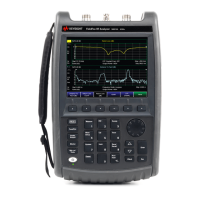
